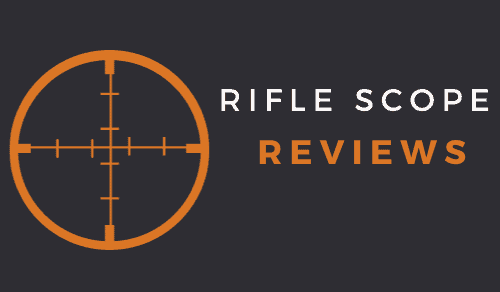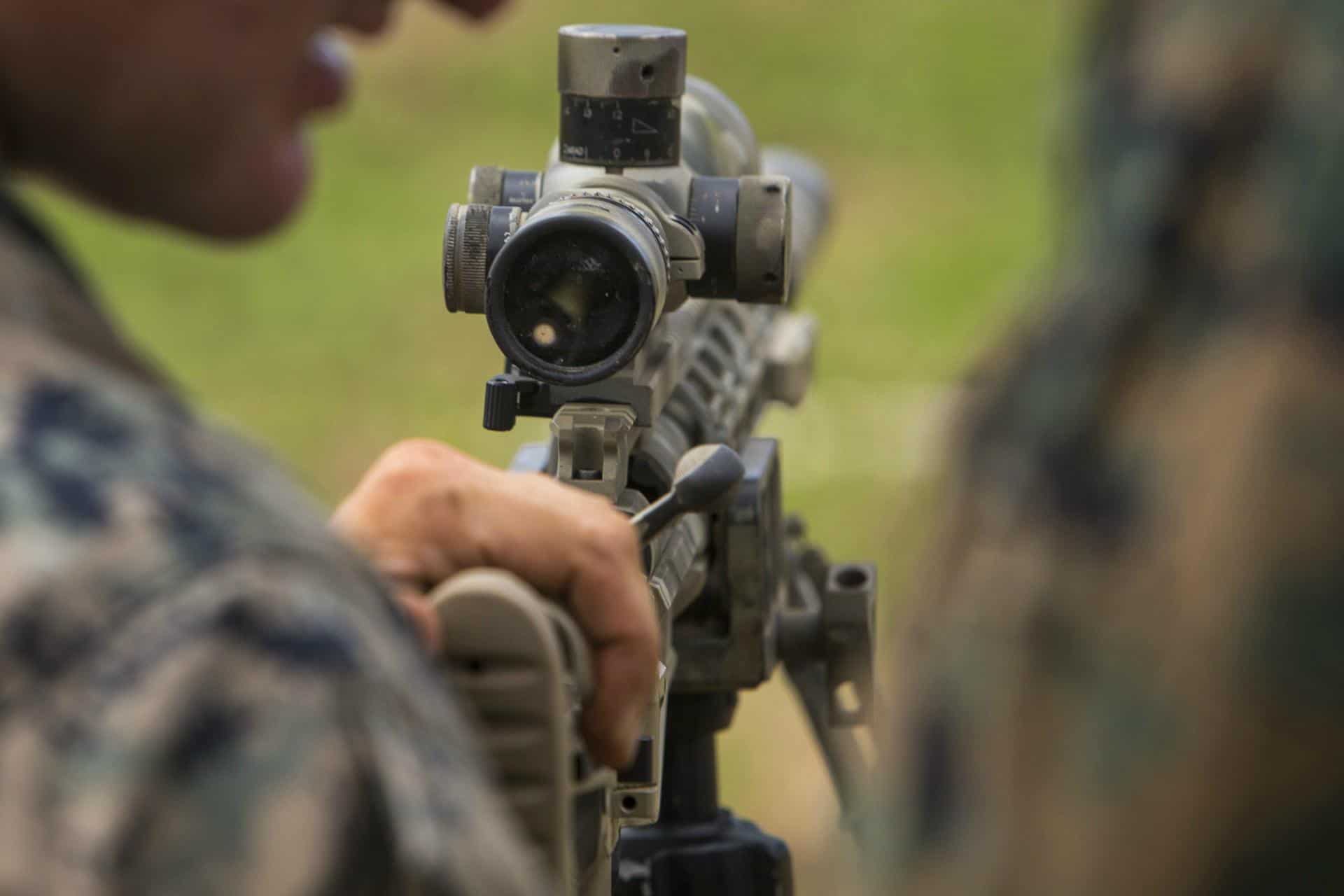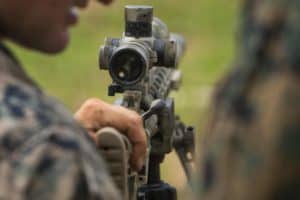As an Amazon Associate I earn from qualifying purchases. Amazon and the Amazon logo are trademarks of Amazon.com, Inc, or its affiliates.
If you are into long range shooting, then it’s rare to see or hear an online conversation about long range scopes, without the mention of FFP scope models. Although FFP scopes were predominately introduced for long range target shooting, they are quickly gaining favor with hunters who have to take a long-range shot. And, then, those discussions usually evolve to a conversation or discussion about the “best” FFP scope models on the market.
However, my goal here is to write about the top five (5) FFP scopes under $500, and, before we can get to that, we’ve got to dive a little deeper into an explanation of exactly what constitutes an FFP rifle scope.
Every true rifle scope on the market (and I don’t count red dot scopes as a rifle scope) mounts the reticle in one of two planes:
- Second Focal Plane – Which is commonly shortened to an acronym of SFP
- First Focal Plane – Which is commonly shortened to an acronym of FFP
The plane where the reticle is mounted plays a major role in how the reticle appears during all the different power ranges of the scope.
SFP riflescopes are, by far, the more well-known and common between the two styles, and, if you’ve done most any shooting through a scope, you’ve probably seen an SFP model. SFP scopes have been around for generations, and, before the FFP models came on the scene, weren’t called SFP scopes. They were just called rifle scopes ????. When I was a kid and first started using a scope on a .22, it was a fixed 4 power model and I had no idea that it was a “second focal scope”.
The FFP scope models are newer on the scene and were originally introduced for extreme long-range target shooting. When FFP scopes were first introduced, they were very expensive and were only available in higher-end target scope models.
However, as the FFP approach gained popularity, rifle scope brands started offering more affordable versions of FFP scope models. Today, FFP scope options are much more common and are becoming more and more popular for hunting applications.
So, what’s the big differences or advantages between an FFP scope and an SFP scope? The answer really lies in how the reticle and how it moves as the power range of the scope is turned up. With an SFP scope, the reticle stays the same size throughout the entire power range. So, when you look through an SFP scope at 4 power, the reticle you see is the same size as the reticle you see at 24 power. On the one hand, that’s a good thing, but it’s not so good for long range shooting.
With an SFP scope, the hold-over spacing for the reticle is only accurate (commonly called “true point”) at a predefined power in the power range. And, that predefined power range varies scope to scope. On some, the reticle being true occurs at 10 power, others are 14 power, while other scope models it may be the highest power setting in the range.
The challenges with an SFP scope start to become evident when shooting at any power other than the “true” power as the size of the reticle in relation to the target changes, which makes the increments of the holder-over spacing change as well. The only solution is to either work a mathematical formula to calculate the correct hold-over or use a phone app (and I’ll get more into ballistic calculating phone apps later). While those options are fine for target shooting, they really are not practical for hunting.
However, with an FFP scope, the reticle appears to change in size as the scope power is increased or decreased. At lower power ranges, the reticle appears smaller, while, at higher power ranges, it appears larger. Notice that I said “appears”, because it’s a bit of an optical illusion as the reticle on an FFP scope actually maintains the same perspective in relation to the target size throughout the entire power range.
This means that the hold-over points on the reticle (be it dots, dashes, mil-hashes, etc.) are the same through the power range. So, a 4 mil hold-over at 6 power on an FFP scope is also a 4 mil hold-over at 20 power. That’s the beauty of an FFP scope.
Now, that doesn’t mean that an FFP scope isn’t without potential issues. On lower powers (like 4 or 6 power) the FFP reticle is very small and takes some getting used to. It’s also very faint and could be hard to see in low-light situations. One way around this is to consider an FFP scope with an illuminated reticle.
The smaller size of the reticle could certainly be a potential issue for a hunter if he or she were shooting at small game up close. Also, an FFP reticle at full power can appear very large and may even block out parts of the game animal, depending on its size. For example, depending on a few factors, such as the distance to the target and selected power, the larger FFP reticle might cover up the vitals or head of a small target like a Prairie Dog.
Now that we’ve covered the ins and outs of SFP scopes versus FFP scopes, let’s get down to the nitty-gritty and start looking at FFP scope models.
Top FFP Scopes on $500 Budget
Optic Brand & Power Range | Image | Tube Size | Focal Plane | Reticle Options | Shop |
Athlon Argos BTR Gen 2 6-24x50 | 30mm | First Focal Plane | ATMR FFP IR MOA | ||
Vortex Diamondback Tactical 6-24x50 | 30mm | First Focal Plane | EBR-2C in MOA or MRAD | ||
Primary Arms SLx Series 4-16x44 | 30 inch | First Focal Plane | Illuminated ARC-2 MOA | ||
Hawke Vantage 30 WA FFP 6-24x50 | 30mm | First Focal Plane | Illuminated Mil-Dots | ||
Athlon Talos BTR 4-14x44 | 30mm | First Focal Plane | Illuminated APLR2 FFP MIL |
A Deep Dive into Budget FFP Scopes
Athlon Optics Riflescope Argos BTR 6-24×50 (Tactical) ATMR FFP IR MOA
Out of all the FFP scope models featured here under the $500 price point, the Argos BTR is one of my favorites. When you start shopping for scopes within a sub $500 budget, you normally have to weed through some low-quality models to find those hidden gems.
Well, the Argos really is a hidden gem as it offers good quality glass (not great mind you, but good) built on a first focal plane design, and mated to a very usable illuminated reticle.
The controls are easy to master, and the 3.3” eye relief is well above average. The side focus on this model focuses all the way down to 10 yards, so it’s versatile enough for most hunting scenarios as well.
If the BTR 6-25X50 has a negative side, it’s these two issues for me:
- The weight – Coming in at nearly 30 ounces, this model is a little heavier than the “average” 6-24X50 scope. However, the additional weight is most likely tied to the illumination, making the added weight very worthwhile.
- Sunshade not included – I know it’s a small thing, but I find it very irritating that the scope does not come standard with a sunshade, and even more irritating is the fact that you must purchase it separately if you want one.
Vortex Diamondback Tactical 6-24X50

One great thing about the Vortex Optics line of riflescopes is the fact that they offer so many different models or series, that it’s nearly impossible to not find something in their line to fit your budget and needs. That being said, let me introduce you to the Vortex Diamondback Tactical 6-24X50 scope with the EBR-2C MOA reticle.
Although the Diamondback is really more of a budget-oriented scope within the Vortex line, the glass on this model is surprisingly clear and bright. The reticle is MOA-based, but Vortex also offers it in an MRAD version if that’s your preference.
My experience with this model indicated that it holds zero and tracks well. The reticle is glass etched (which, to me, is better than a wire reticle) so the FFP subtends stay true through the full power range. Like a few other FFP models being mentioned here, this model also has a side focus that focuses all the way down to 10 yards, making it a candidate for hunting as well.
My one knock on this model is the lack of an illuminated reticle. The EBR-2C reticle is very thin (which makes perfect sense for long range targets), but it’s too thin to see in low light without illumination. Again, a great reticle for targets, but not one I’d recommend for any type of low-light hunting. At lower power, especially in low light, the reticle basically just disappears.
Primary Arms SLx Series 4-16x44mm FFP Rifle Scope – Illuminated ARC-2 MOA Reticle

If you’re in the market for an FFP scope (and you most likely are, if you are reading this), the Primary Arms brand of scopes may be one of the best FFP scope options on the market for under $300.
Primary Arms outsources the production of these scopes to China, and I’m not usually a fan of Chinese-made scopes as I find the quality lacking. However, this model has more than decent glass and seems very well built. Plus, Primary Arms has an excellent reputation for standing behind their products. Even better, the FFP functionality and reticle are very good for the price.
Something to be aware of with Primary Arms: they really focus on the AR side of shooting, so the ballistic calculators that they include with this scope are really geared towards the common calibers you see in an AR platform, like .223/5.56, .308, .300 Blackout, etc.
So, if you purchase this model and happen to mount it on a rifle in a different caliber (say a .270) you’ll have to create your own ballistic calculator for that caliber as the default Primary Arms ones won’t work for you.
Just to be clear, even though Primary Arms focuses on the AR platform, this scope can be used on any rifle.
My complaints about this FFP scope are fairly basic:
- Limited Ballistic Calculator – which I already mentioned above
- No sunshade – Again, a minor complaint, especially on a sub $300 FFP scope, but an annoyance, nonetheless.
- The zero stop adjustment – I suppose I shouldn’t complain as most scopes in this price range don’t even have a zero stop, but it’s worth mentioning. Most higher-end scopes have a zero stop that is relatively easy to set. In order to set the zero stop in this model, you have to remove the turret with an Allen screw, set the zero stop to its desired location, then screw the turret back down to hold the zero stop in place.
If you just want to give an FFP scope a try for the least amount of money involved, then this scope would be a good option.
Hawke Vantage 30 WA FFP 6-24×50

Based in the UK, the Hawke brand of riflescopes is not as well known in the United States compared to mainstream brands like Nikon, Vortex, and Leupold. However, Hawke offers very good scopes for the money, with riflescope models to fit almost every budget.
Airgunning is hugely popular in England and Hawke originally got their start offering specialized air gun scopes. They have since expanded in the centerfire, rimfire, and shotgun scope markets, and pretty much have a first or second focal plane scope option for almost every shooting scenario.
The Vantage series is Hawke’s mid-level series, and within that series is the Vantage WA 30 FFP family of scopes. This family currently consists of two FFP scope models:
- 4-16×50 FFP
- 6-24×50 FFP
For this write-up, I’ll be focusing on the higher-powered 6-24×50 model as I feel that it offers the best bang for your buck.
Pricewise, this model is closer to the top end of the $500 budget but you get get a bit of scope for the money.
Here’s what I liked about the scope:
- This scope is built on a 30mm tube, which is not uncommon for an FFP scope.
- The optical quality is good with the glass is very bright and clear.
- The power range changes very smoothly and the FFP functionality works well.
- Comes with an illuminated reticle (which may be helpful in some situations).
Here’s what I was not crazy about:
- Instead of a traditional mil-dot reticle, this scope comes with a Half Mil-Dot reticle. The idea behind a half mil-dot reticle is the added mil-dots offer additional hold-over points that are more granular than a traditional mil-dot reticle. While I understand the concept driving this design, I personally prefer traditional mil-dots. However, that’s just my personal opinion, and the half mil-dot reticle works just fine. I have a shooting buddy who absolutely loves the Hawke half mil-dots so the concept is not unpopular.
- The illumination design features built-in red or green illumination. I much prefer the red and find the green to be nearly useless, especially on bright, sunny days. I’d prefer that Hawke offered this reticle with only the red illumination, but that’s just me being nit-picky.
If you felt that the 6-24 version of this scope was too much magnification, then the 4-16×50 model may be a better option for you. That version can be found here.
The bottom line: If you were shopping for an FFP scope in a price range close to but over the $500 mark, then this Hawke scope would certainly be worth considering.
Athlon Talos BTR 4-14×44 APLR2 FFP IR MIL

The FFP functionality is fundamentally sound on this model, and it tracks well. The optical quality is better than average for a scope in the sub-$300 range.I’ve seen a few online complaints about the quality of this specific Athlon series, but every Talos model I’ve tested has held up very well. Even if, you did encounter an issue with one, Athlon is pretty solid on their warranty and customer service.
Here’s what I like about this scope:
- Better than average optical quality for this price range.
- Illuminated reticle (which is a bonus)
- Tracks accurately and returns to zero (which can’t be said of every sub $300 scope)
- Offers side focus that adjusts all the way down to 10 yards.
Here’s what I’m really not a fan of:
- If I had one complaint, (and it’s a small one), it would be the APRL2 IR MIL reticle. At 4X, I can barely see the reticle much less get it on target at 100 yards. Two things to keep in mind on that topic:
- (1) I have horrible vision
- (2) I rarely shoot at 100 yards on 4x. Again, a minor complaint that just may be more associated with my poor vision.
This scope is really far better suited as a long-range target scope versus a hunting scope. You could certainly use it for hunting game, but I see the reticle as more of a target reticle. However, this is a great scope for the money.
Final Thoughts
So, are the optics listed above the best first focal plane scopes on the market? No, but they are my recommendations for a good FFP optic priced at or under $500. Keep in mind, the first focal plane scopes I discussed above are not the only models priced less than $500, but they are my favorite models at that price point.
I’ve been working in the firearms and sporting optics industry for over 20 years, with a personal and professional interest in all things related to rifle scopes, Through a combination of work experience, formal training, and personal experiences, I have extensive experience mounting, testing, and evaluating different rifle scope models across most major optical brands.









